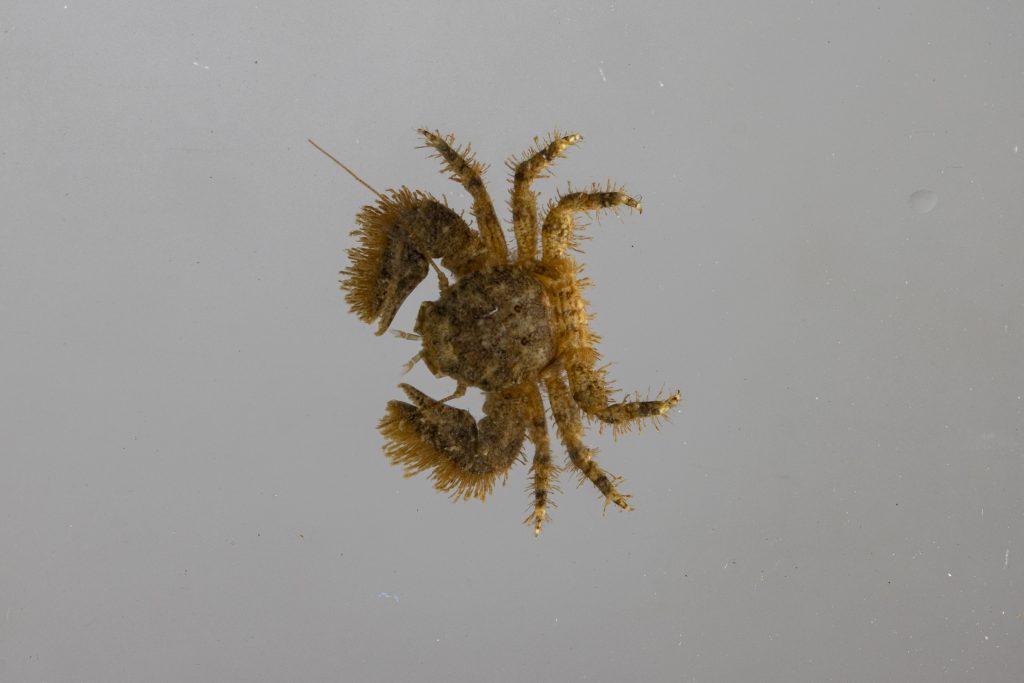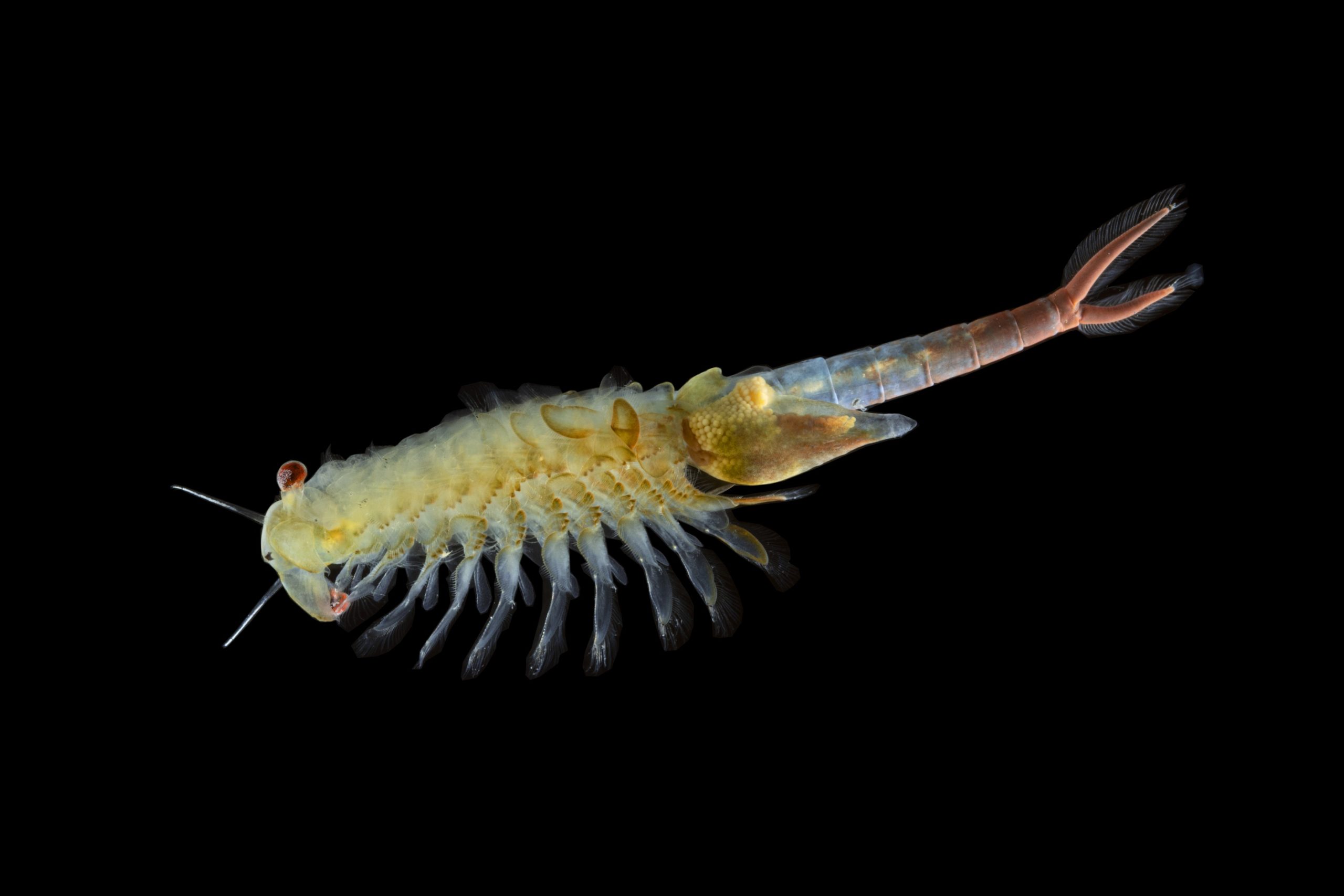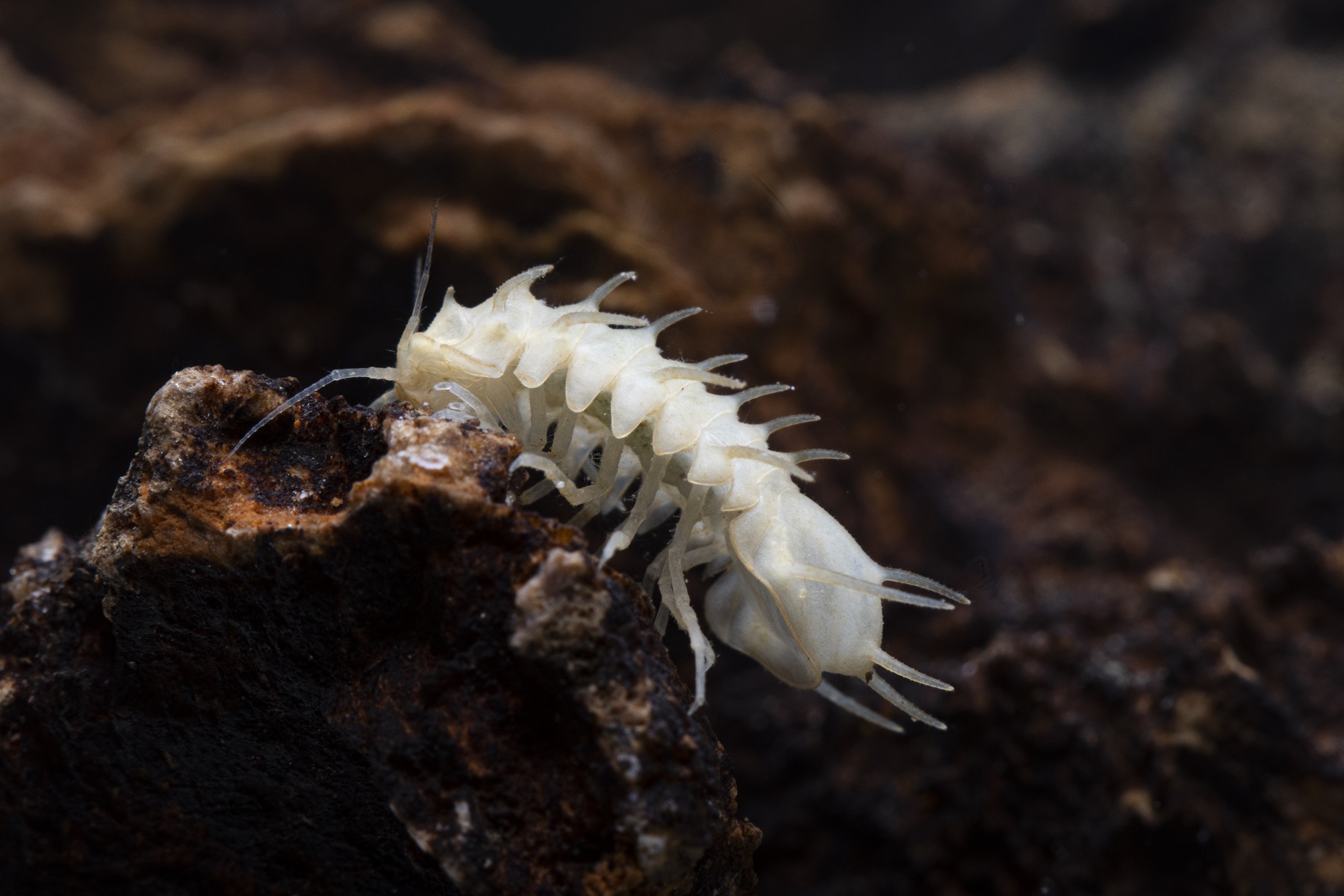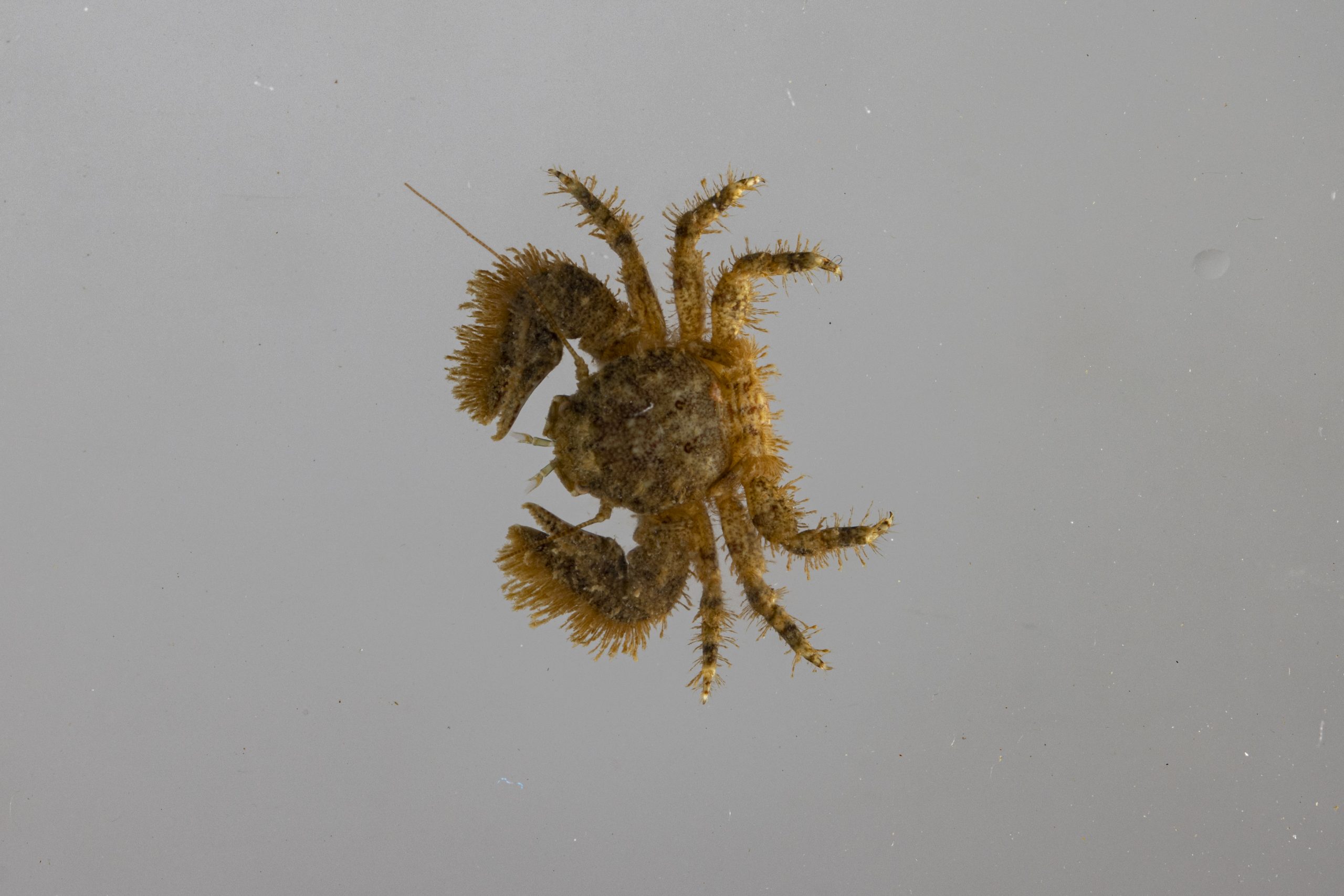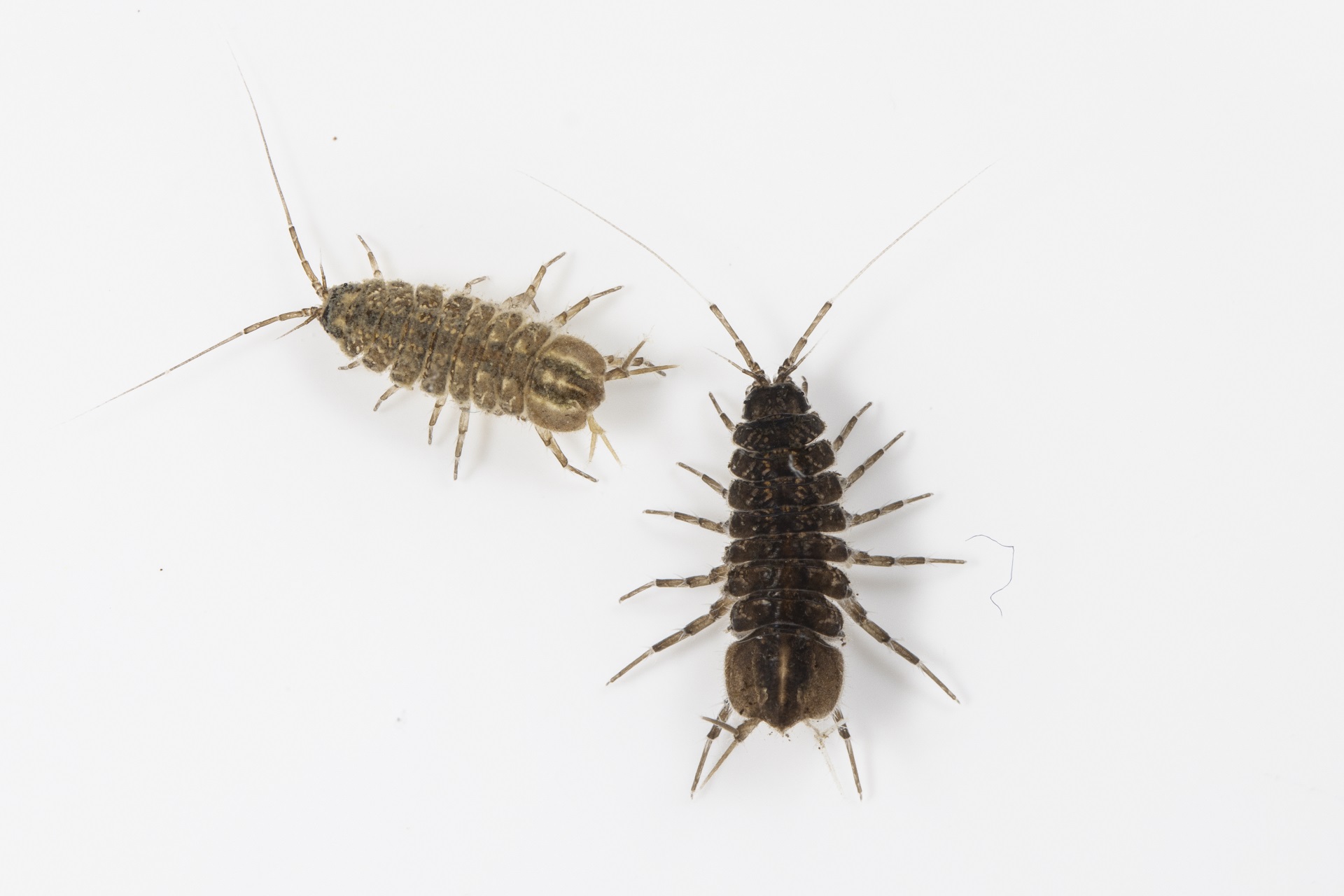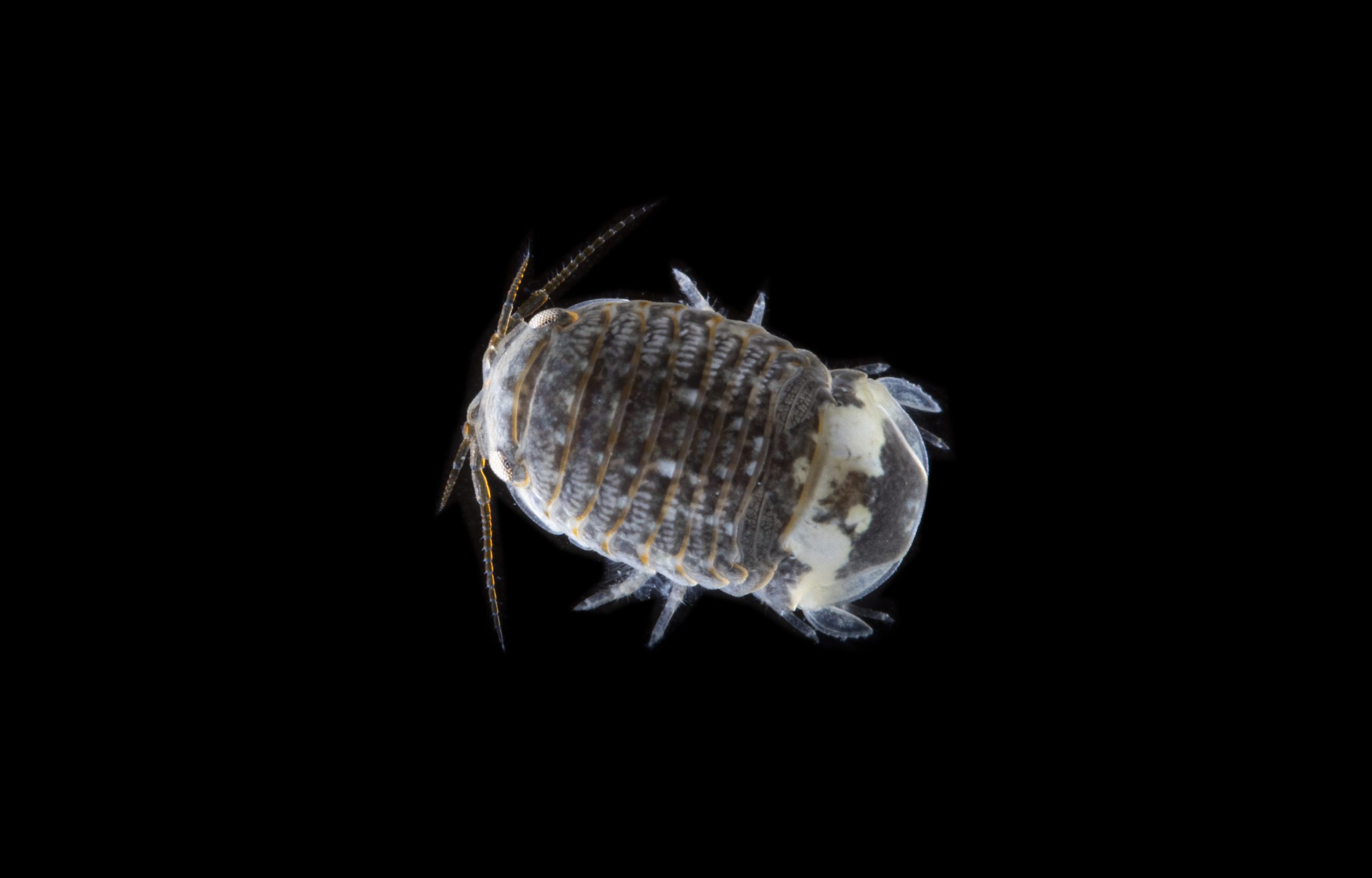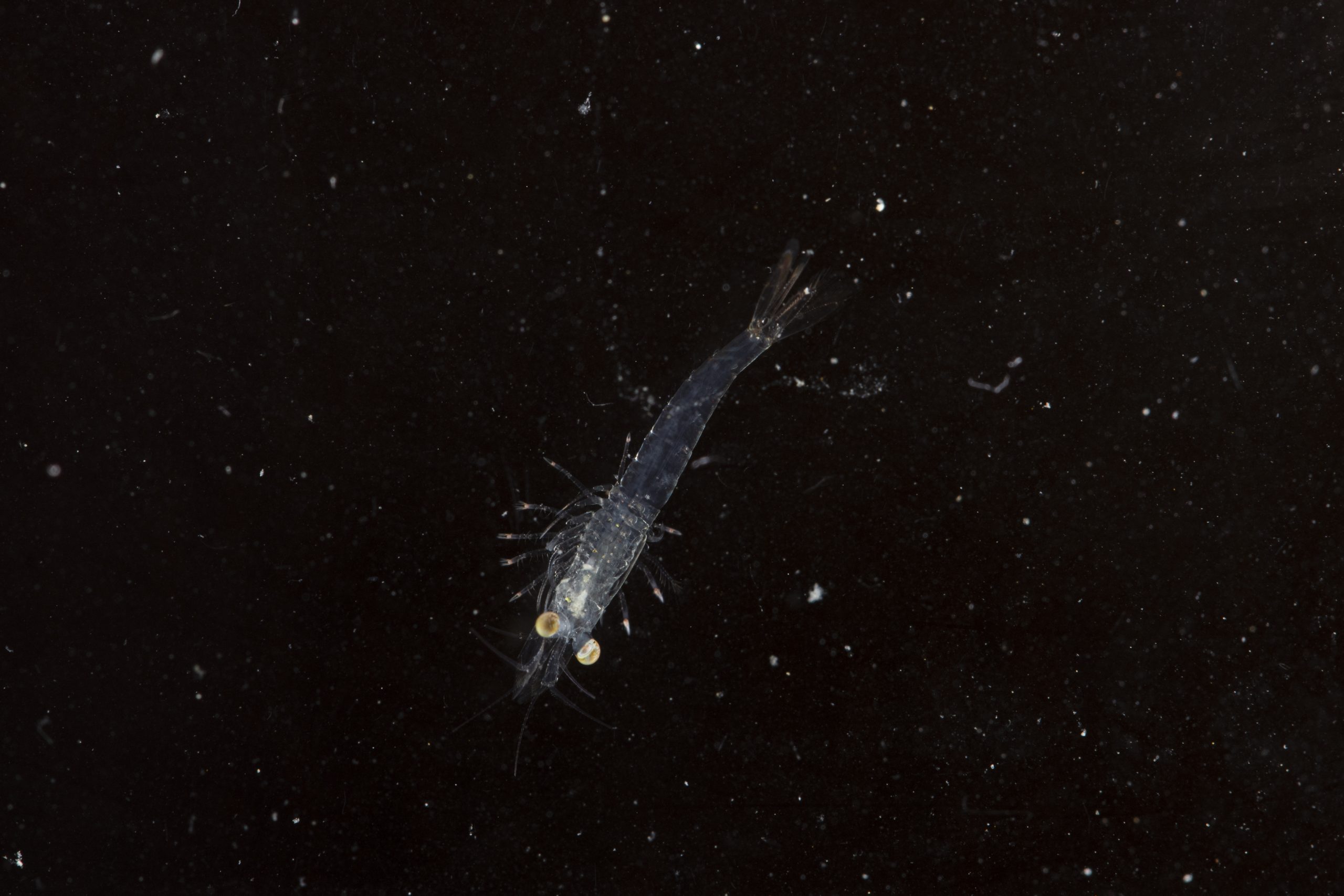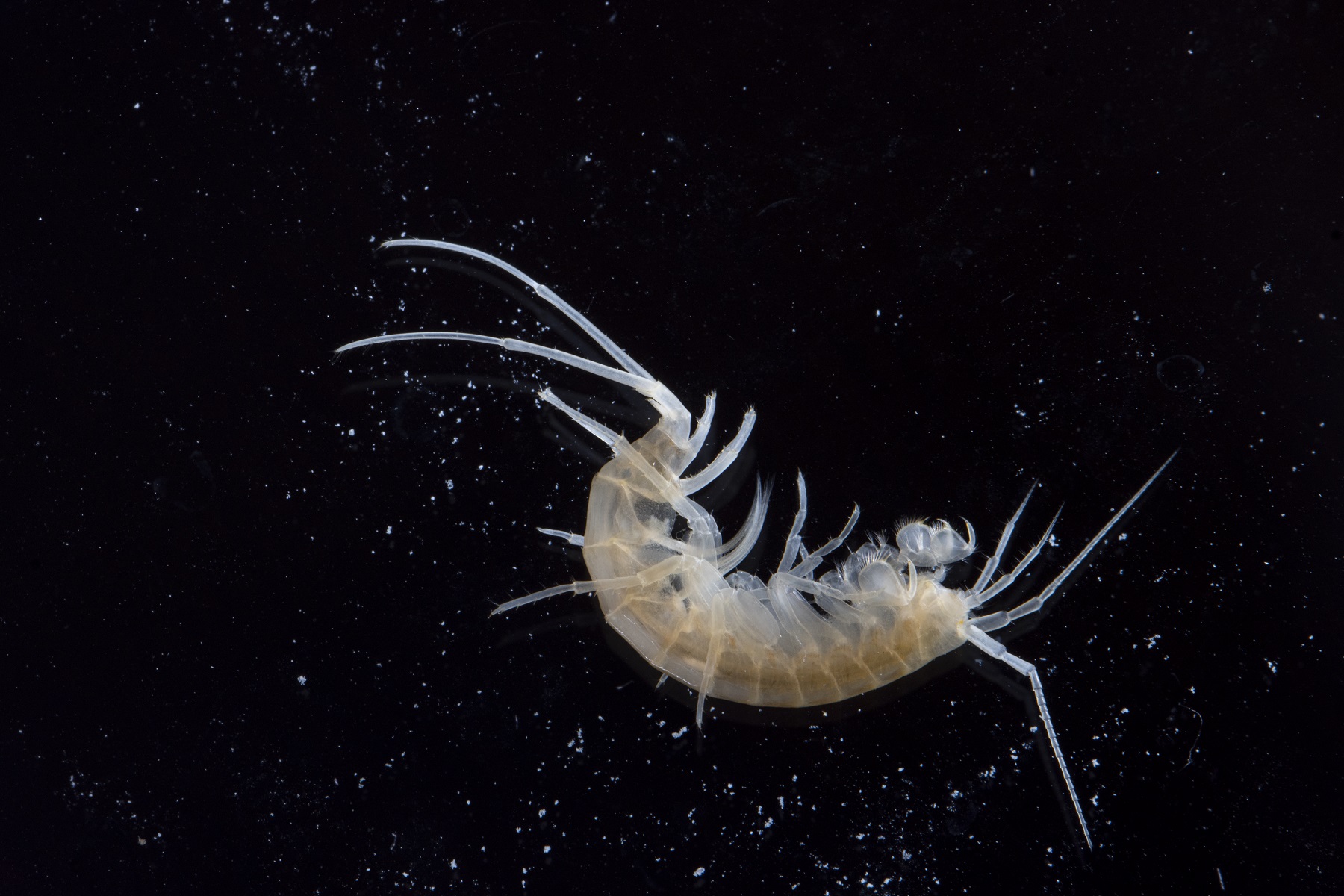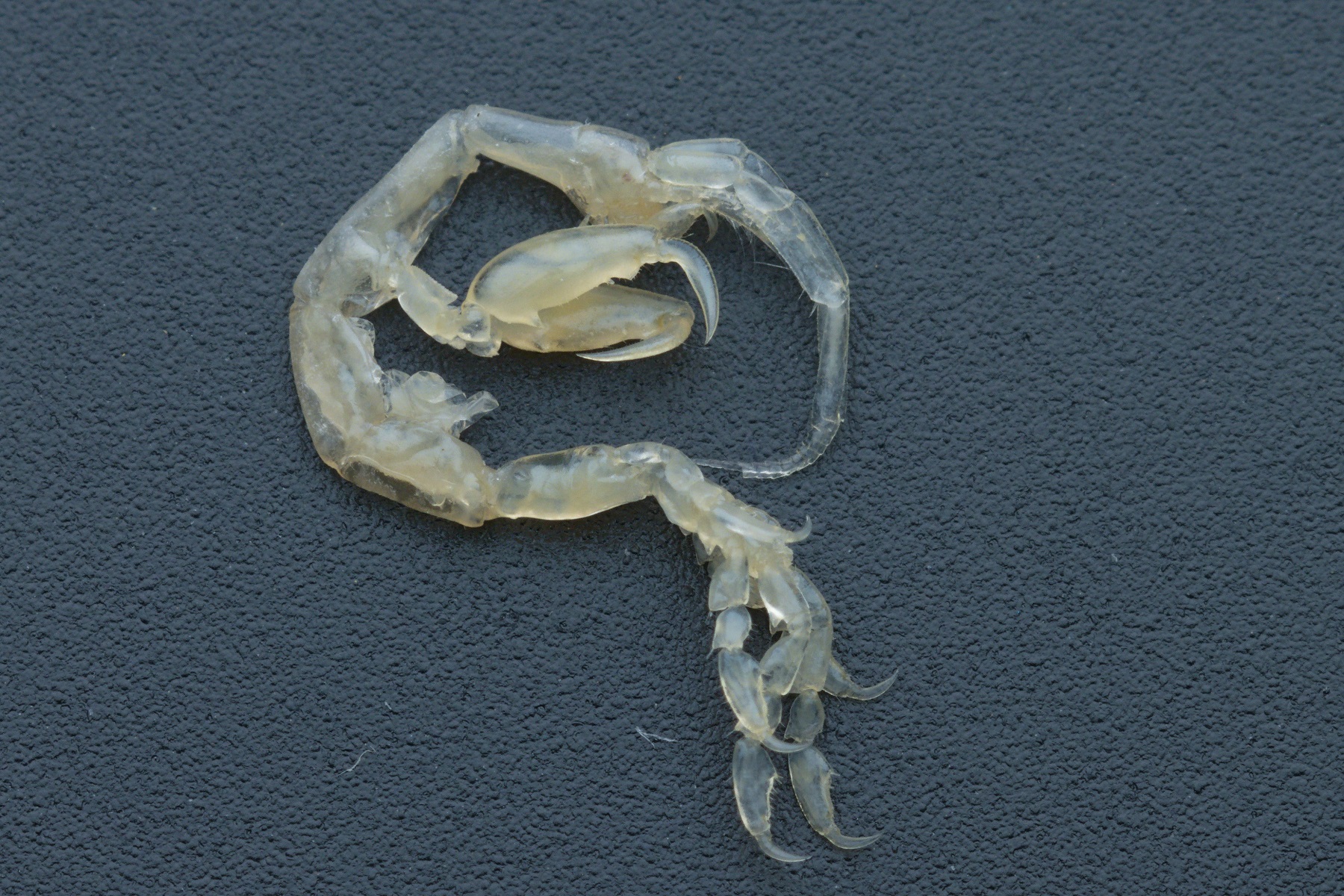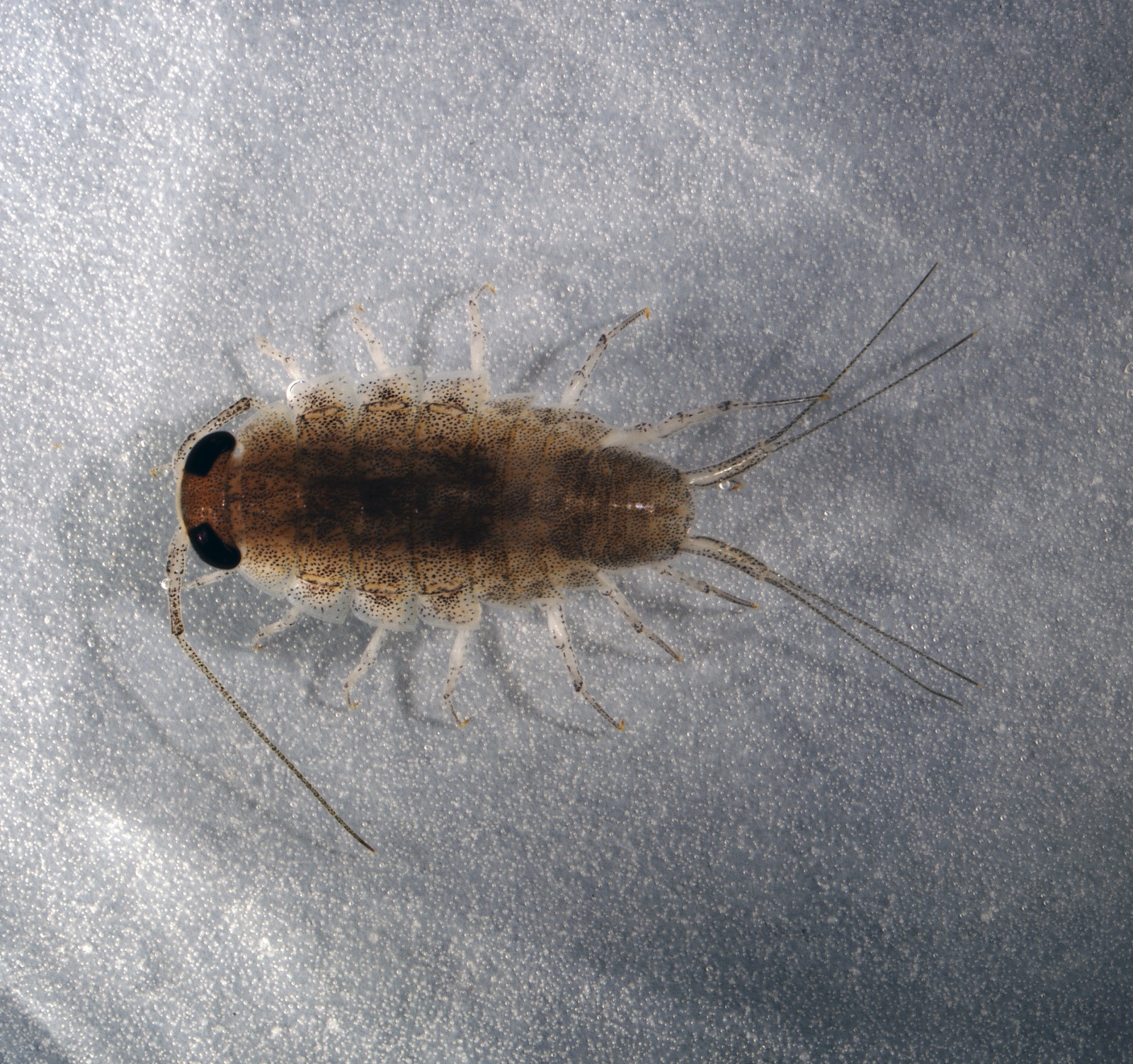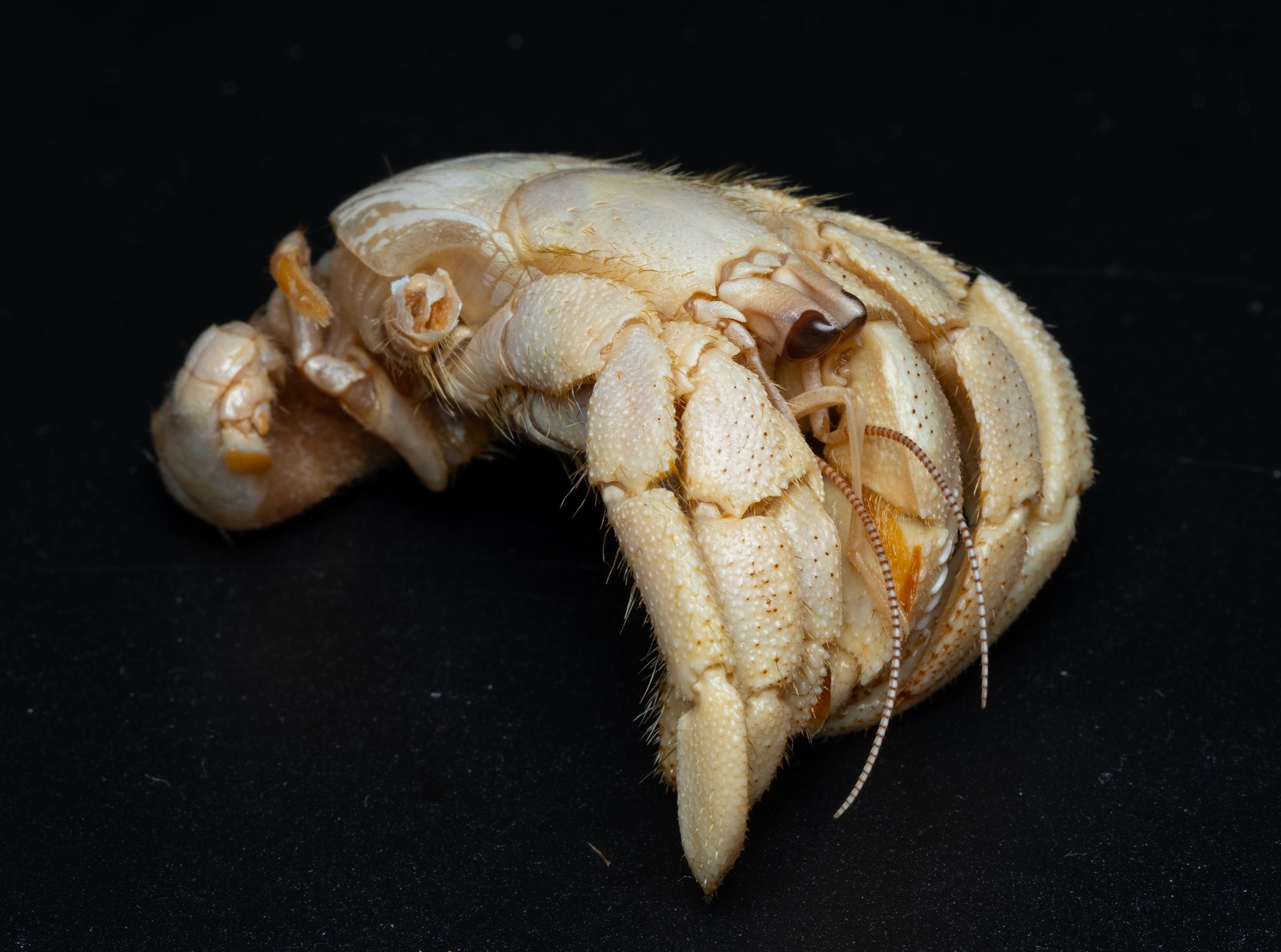- Crustaceans
Porcellana platycheles
The broad-clawed porcelain crab belongs to the family of porcelain crabs (Porcellanidae) which resemble true crabs (Brachyura) due to their dorso-ventrally flattened body, abdomen folded beneath the pereon, and sideways walking, however they actually belong to Anomura. The broad-clawed porcelain crab is a small crustacean reaching about one centimeter in length. Dorsally, they are reddish-brown with dense greenish-brown bristles. Ventrally, they are lighter in color and without bristles. The body consists of a cephalothorax, pereon and pleon (abdomen). The cephalothorax and pereon are covered by a carapace which extends laterally to the bases of the appendages and forms a branchial chamber. The abdomen is short and folded beneath the pereon. The exoskeleton is highly calcified.
The cephalothorax is fused from an acron, five head segments, and three additional body segments. The head region bears stalked compound eyes and two pairs of filiform antennae. Antennae I are short and biramous, while antennae II are considerably longer than the body. In true crabs both pairs of antennae are short. The antennae have chemo- and mechanosensory function. Mouthparts comprise a pair of mandibles, a pair of maxillae I, a pair of maxillae II and three pairs of maxillipeds. Evolutionary, the maxillipeds are modified appendages of the first three thoracic segments.
The pereon consists of five segments. The carapace covers their dorsal side, so they are indistinguishable. The first pair of pereon appendages (pereopods) are large chelipeds. Their chelae (claws) are wide and flattened and inspired the name of the species. The second, third, and fourth pair of pereopods serve as walking legs. The fifth pair is reduced in size, partially hidden in the branchial chamber and is used for gill cleaning. In true crabs the fifth pair of pereopods is large and used for walking. The leaflike gills originate at the bases of pereopods.
The abdomen is comprised of six posterior body segments (pleomeres) and a telson. It is symmetrical, short, and folded beneath the pereon. Five pairs of abdominal appendages (pleopods) are reduced to various degrees. In females only the third, fourth, and fifth pairs are present, they are leaflike and used to carry eggs. In males only the second pair is present and is modified into gonopods which are used to transfer sperm to female. The sixth pleomere carries a pair of flattened uropods which are absent in true crabs. The telson is large, flattened, and consists of seven plates.
The broad-clawed porcelain crab is distributed along the Mediterranean and European Atlantic coasts. It is abundant in the intertidal zone, hiding under rocks and in crevices. It is rarely encountered in deeper areas, where instead the long-clawed porcelain crab (Pisidia longicornis) and Pisidia bluteli are common. Both species have long claws and lack bristles.
Despite its large and strong claws, the broad-clawed porcelain crab is not a predator but a filter-feeder and a detritivore. The long bristles on the third pair of maxillipeds are used to catch suspended food particles, which are then transferred towards the mouth with the second pair of maxillipeds. The chelipeds are rarely used in feeding, instead they are important in social interactions between conspecifics and in defense against predators. Males have larger chelipeds than females. This is a consequence of sexual selection since the males with larger chelipeds are more successful in competition with other males and thus mate with females more often. Heterochely is present, meaning that in the same individual one of the chelipeds is larger. Individuals with larger left or right chelipeds are usually equally common.
The broad-clawed porcelain crab has additional anti-predator strategies besides its large claws. It usually hides on the underside of a rock where it tightly clings to the substrate so that it is almost impossible to displace it. If the predator manages to grab it nevertheless, it can autotomize appendages, usually the cheliped. The predator gets a small bite while the porcelain crab runs away to safety. The habit of shedding their limbs when in danger makes them appear fragile as porcelain and was an inspiration for their vernacular name. The porcelain crab gradually regenerates the lost limbs during subsequent molts.
Young porcelain crabs do not resemble adults at all. Their larva (zoeae) reaches a few millimeters in size and has a distinct carapace with a long rostrum and two long backwards facing spines. These carapace protrusions serve in anti-predator defense and increase the buoyancy of the larva.
More photos
Related arthropods

Authors
- Urban Bogataj,
- Gregor Bračko,
- Teo Delič,
- Cene Fišer,
- Žiga Fišer,
- Rok Kostanjšek,
- Rudi Verovnik,
- Miloš Vittori,
- Valerija Zakšek.
Students Vito Ham, Vesna Jurjevič, Gaj Kušar, and Adrijan Samuel Stell Pičman also participated in the project.
